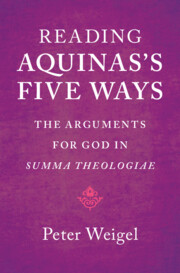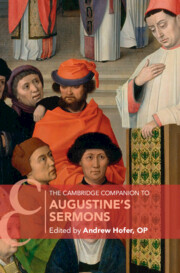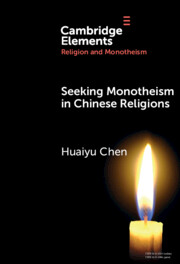Refine search
Actions for selected content:
290 results

Modelling the Divine
-
- Published online:
- 05 December 2025
- Print publication:
- 08 January 2026
-
- Element
- Export citation
Chapter 4 - A Soft Metaphysics for Jewish Theology
- from Part II - Reviving Jewish Theology
-
- Book:
- Reviving Jewish Theology
- Published online:
- 20 November 2025
- Print publication:
- 04 December 2025, pp 79-110
-
- Chapter
- Export citation
Earthly life is not pointless for universalists
-
- Journal:
- Religious Studies , First View
- Published online by Cambridge University Press:
- 26 November 2025, pp. 1-16
-
- Article
-
- You have access
- Open access
- HTML
- Export citation
What Theological Commitments Structure Loving Attention to Moses’s Law?
-
- Journal:
- New Blackfriars ,
- Published online by Cambridge University Press:
- 24 November 2025, pp. 1-18
-
- Article
-
- You have access
- Open access
- HTML
- Export citation
Chapter 2 - Suárez’s Metaphysics of Modality
- from Part II - Being, Its Properties, and Ancillary Notions
-
-
- Book:
- Suárez's <i>Metaphysical Disputations</i>
- Published online:
- 13 October 2025
- Print publication:
- 30 October 2025, pp 35-53
-
- Chapter
- Export citation
8 - Epilogue
-
- Book:
- Kant's Metaphysics of the Will
- Published online:
- 06 November 2025
- Print publication:
- 09 October 2025, pp 209-213
-
- Chapter
- Export citation
Cosmological fine-tuning: the view from 2025
-
- Journal:
- Religious Studies , First View
- Published online by Cambridge University Press:
- 08 October 2025, pp. 1-11
-
- Article
-
- You have access
- Open access
- HTML
- Export citation
Chapter 2 - Punishing the Transgressive Will
-
- Book:
- The Will in English Renaissance Drama
- Published online:
- 04 September 2025
- Print publication:
- 18 September 2025, pp 63-99
-
- Chapter
- Export citation
The opposition of omnibenevolence towards evil
-
- Journal:
- Religious Studies , First View
- Published online by Cambridge University Press:
- 18 September 2025, pp. 1-23
-
- Article
-
- You have access
- Open access
- HTML
- Export citation
‘Only God, my dear’: being loved for oneself and creation from nothing
-
- Journal:
- Religious Studies , First View
- Published online by Cambridge University Press:
- 16 September 2025, pp. 1-17
-
- Article
-
- You have access
- Open access
- HTML
- Export citation

God and Technology
-
- Published online:
- 04 August 2025
- Print publication:
- 21 August 2025
-
- Element
- Export citation
Chapter 14 - Religion
- from Part II - Social Contexts
-
-
- Book:
- Sean O'Casey in Context
- Published online:
- 23 June 2025
- Print publication:
- 10 July 2025, pp 150-158
-
- Chapter
- Export citation

Reading Aquinas's Five Ways
- The Arguments for God in Summa Theologiae
-
- Published online:
- 05 June 2025
- Print publication:
- 19 June 2025

The Cambridge Companion to Augustine's Sermons
-
- Published online:
- 26 May 2025
- Print publication:
- 12 June 2025
Aquinas’s Argument for an Uncaused Cause
-
- Journal:
- New Blackfriars / Volume 106 / Issue 3 / May 2025
- Published online by Cambridge University Press:
- 02 May 2025, pp. 169-186
- Print publication:
- May 2025
-
- Article
- Export citation
Chapter 24 - Religion
- from Part II - Intellectual, Cultural, and Political Contexts
-
-
- Book:
- Percy Shelley in Context
- Published online:
- 17 April 2025
- Print publication:
- 24 April 2025, pp 180-186
-
- Chapter
- Export citation
Kant on the Dual Grounding of Possibility
-
- Journal:
- Kantian Review / Volume 30 / Issue 2 / June 2025
- Published online by Cambridge University Press:
- 03 April 2025, pp. 215-233
- Print publication:
- June 2025
-
- Article
-
- You have access
- Open access
- HTML
- Export citation

Seeking Monotheism in Chinese Religions
-
- Published online:
- 20 March 2025
- Print publication:
- 27 March 2025
-
- Element
- Export citation
Is the cosmological argument intuitive?
-
- Journal:
- Religious Studies / Volume 61 / Issue S1 / July 2025
- Published online by Cambridge University Press:
- 10 February 2025, pp. S22-S44
- Print publication:
- July 2025
-
- Article
-
- You have access
- Open access
- HTML
- Export citation
4 - The Efficacy of Empirical Vision for Belief
- from Part II - Seeing God
-
- Book:
- Jesus and the Visibility of God
- Published online:
- 18 January 2025
- Print publication:
- 23 January 2025, pp 137-168
-
- Chapter
- Export citation
